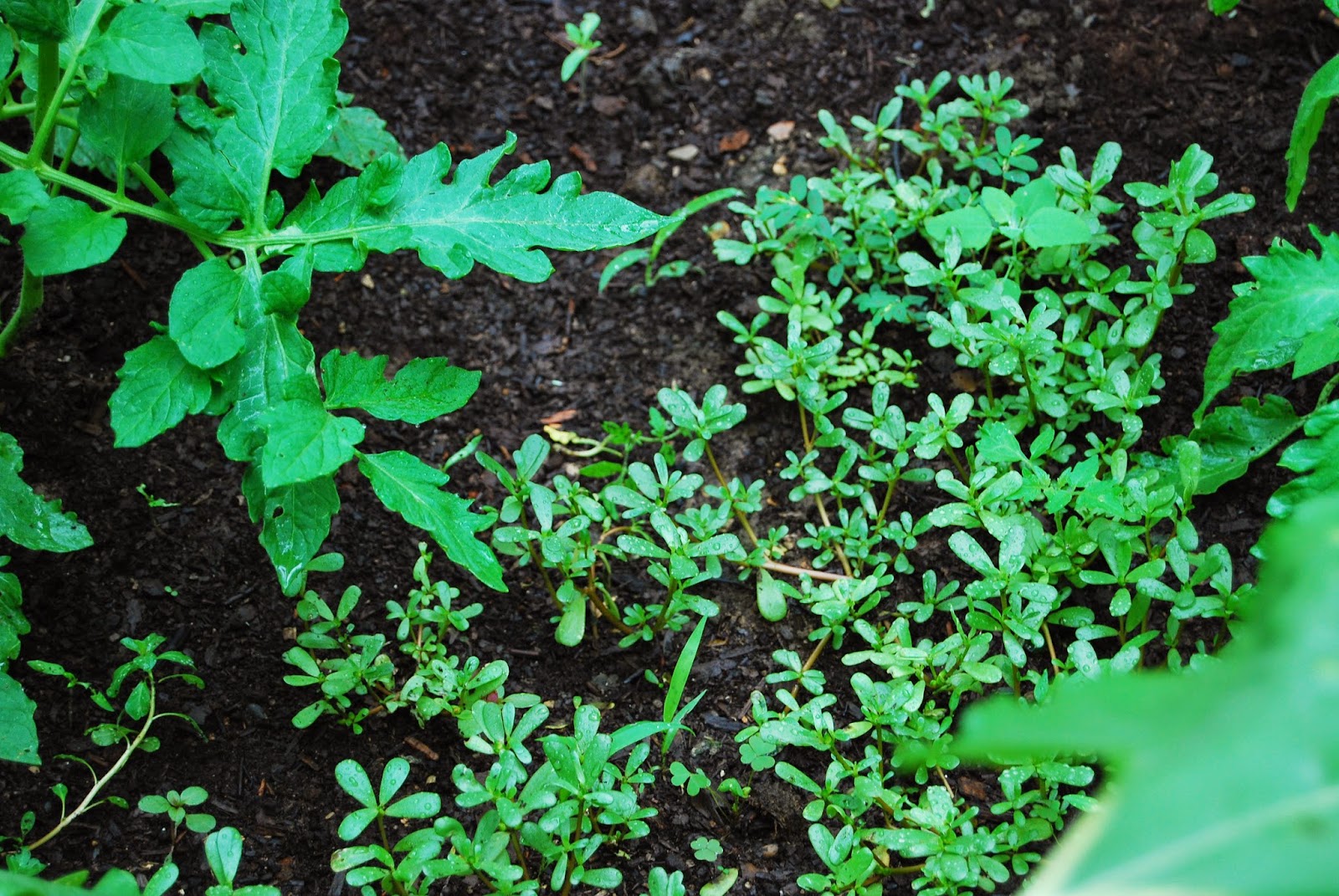Purslane is a common weed found in most of our yards and gardens. I call it a superweed, not because it is unmanageable, but because it is a nutritional powerhouse!
Check out these nutrition facts:
-purslane has more omega-3 fatty acids (in the form of ALA) than any other plant food. 100 grams of fresh purslane contains 350 mg of ALA. Increasing our intake of omega-3's has been linked to better heart health and decreased systemic inflammation.
-it is a good source of many vitamins and minerals including vitamins C and E, riboflavin, beta carotene, iron, magnesium, manganese, potassium and calcium.
-purslane is also high in dietary fiber, contains antioxidants and is reported to contain compounds which help with depression.
 |
| Purslane growing among the thyme and rosemary. |
In my garden, I practice selective weeding. I'll pull other weeds and leave the purslane to grow. It is actually beneficial to the surrounding plants as it provides a great edible ground cover which helps retain soil moisture and prevents other weeds from taking over. It grows low to the ground so it doesn't impede my other plants from getting the sunlight they need - and it's such a cute and happy looking plant!
Purslane is an annual plant that reseeds itself each year. The seedlings will appear when the soil warms to 76 degrees F. The plant will grow in just about any soil conditions, even in the cracks of the sidewalk, and the seeds can remain viable in undisturbed soil for more than 30 years. I will allow some of my purslane to flower and go to seed to ensure that I will have more purslane next year.
I think purslane is delicious. It has a mildly tart lemony flavor. I eat purslane straight from the garden sometimes, but most of the time I'll add it to a salad along with other greens. (Only harvest purslane in areas which you know have not been chemically treated.) The leaves, tender stems and flowers are all edible. Just pinch off the stems, or pull the entire plant and cut off the roots if you are trying to control the plant.
I added olive oil, lemon juice, salt and pepper to the bowl of purslane in the photo at the top of this post and ate it all! It can also be added to potato salad, soups, or anywhere you would use spinach or other greens.
In the case of purslane, I'm happy to ask my kids, "have you eaten your weed today?"
 |
| Purslane as ground cover under my tomato plants. |
Sources:
http://www.naturalhealth-solutions.net/healthy-eating/powerhouse-of-nutrition-purslane
http://www.nutrition-and-you.com/purslane.html
http://www.canadiangardening.com/plants/native-plants-and-wildflowers/purslane-an-edible-groundcover/a/31791

